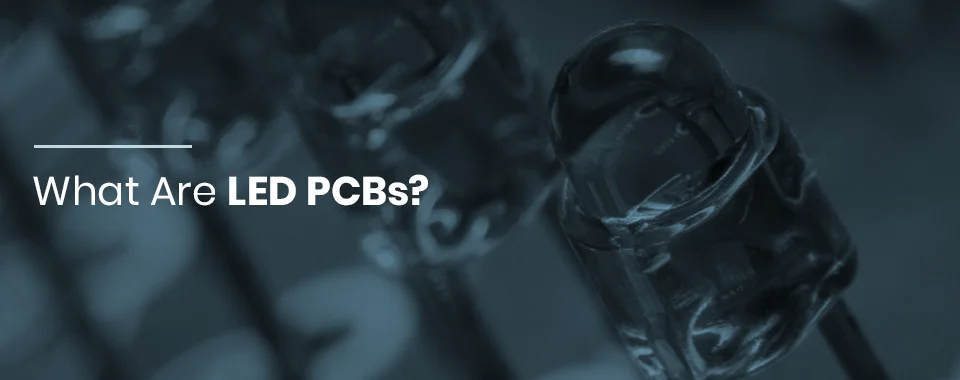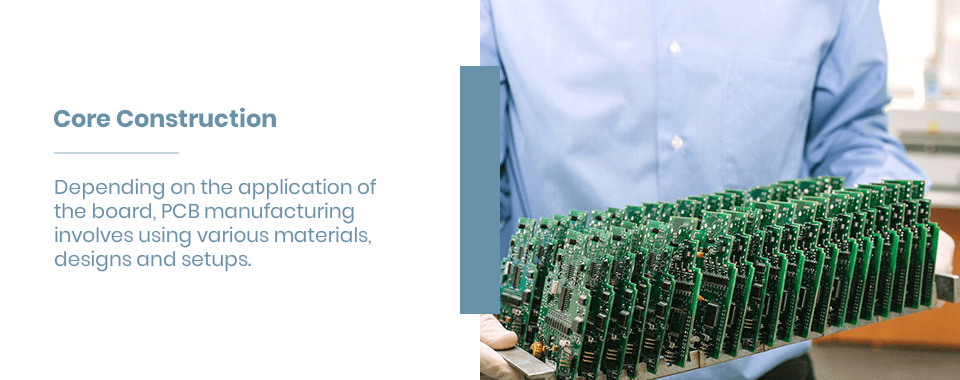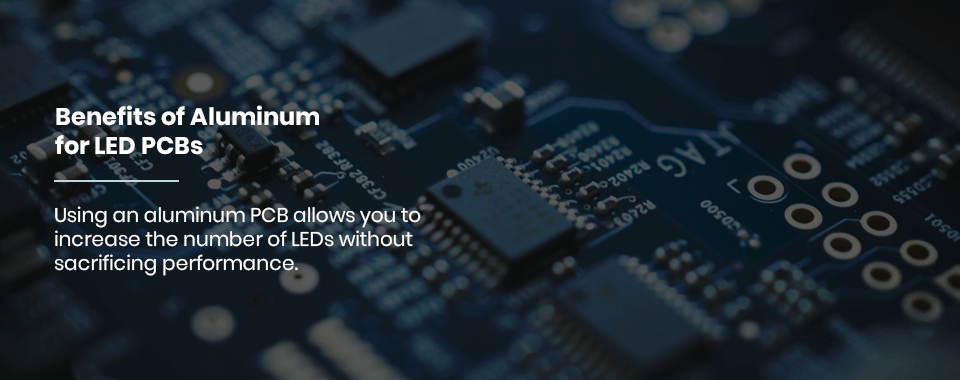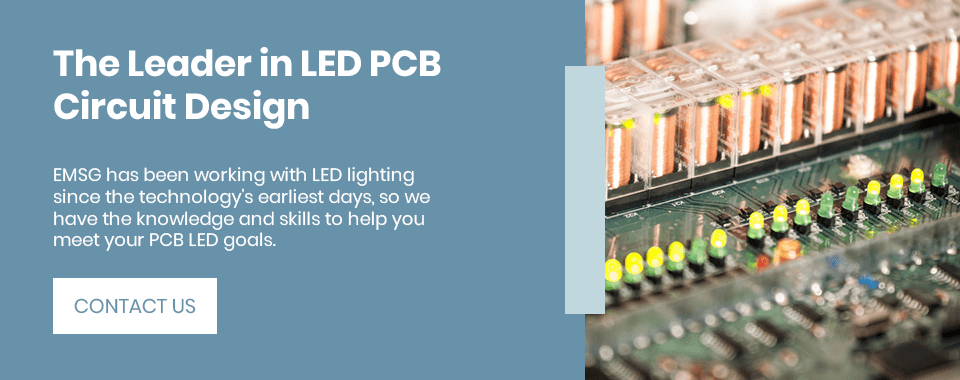What Are LED PCBs?
Light-emitting diodes, more commonly called LEDs, are an increasingly popular technology for lighting across various industries. LEDs are a type of solid-state lighting that converts electricity into light using a semiconductor. Compared to traditional light bulbs, they reduce energy use by as much as 80% and last up to 25 times longer. They also offer other advantages, such as their small size and environmental friendliness.
Printed circuit boards are a technology that plays a valuable role in supporting LEDs. These are thin boards made of fiberglass, metals or other materials that electrically connect electronic components. These boards, often called PCBs, are essential to many LED applications. They may physically support the LEDs and transfer heat away from the bulbs to enhance their performance and prevent them from becoming damaged.
LED printed circuit boards have numerous characteristics that help them perform ideally in their applications. In this article, we’ll look at some of these characteristics, some of the applications of LED PCBs and the benefits of using these technologies.
The Basics of LED PCB Design
PCB LED boards come in several variations that are ideal for different applications. How do we make PCB LED systems, and what features do they offer?
Core Construction
Depending on the application of the board, PCB manufacturing involves using various materials, designs and setups. One of the most critical aspects is the material composing the core of the circuit board.
Some common PCB core materials include the following.
- FR-4: FR-4 consists of glass and epoxy and is one of the most common core materials. It is fire-retardant, but not especially efficient at transferring heat.
- Epoxies: Epoxies are another common option. They are not as durable as other core materials, but they cost less to manufacture.
- Metal-core: Metal-core PCBs often consist of aluminum alloyed with other metals and laminated with copper. These materials are useful for applications involving heat transfers and offer excellent thermal conductivity and electrical insulation.
Because of the vital role of heat transfer in LED PCB applications, metals, especially aluminum, are the most common LED PCB materials.
Aluminum LED Circuit Boards
Aluminum PCBs are the most common type of LED PCB. These boards sit on an aluminum alloy base, which often consists of aluminum, magnesium and silicon. These LED PCB materials alter the properties of the material to help meet the needs of each application.
Aluminum PCBs consist of several layers.
- The base layer: The base layer includes an aluminum alloy sheet, and is the layer the rest of the PCB sits upon.
- The thermal insulation layer: The thermal insulation layer consists of a ceramic polymer and protects the board from thermal and mechanical damage. As the current travels throughout the circuits, this layer absorbs any heat given off and transfers it to the aluminum layer, where it disperses.
- The circuit layer: This layer contains the copper circuits laid out according to the LED PCB’s circuit design.
PCBs have different numbers of these layers, depending on the board’s design.
There are several types of aluminum LED PCBs, which offer different characteristics that make them ideal for various applications.
- Flexible aluminum: Flexible LED PCBs consist of aluminum, polyimide resin and ceramic fillers, which give it increased flexibility and insulation, while retaining the aluminum’s thermal conductivity. You can flex these PCBs to connect them, eliminating the need for connectors, cables and other fixtures. However, their design enables them to bend once and get put in place, rather than flexing constantly. These boards differ from the standard rigid boards, which do not bend.
- Hybrid aluminum: Creating these types of boards involves fusing an aluminum base metal with a non-thermal material, such as a conventional FR-4 board. Using this type of board reduces costs and increases rigidity while offering excellent heat dissipation.
- Multilayer aluminum: Multilayer aluminum PCBs have more than two layers made of thermally conductive dielectrics. These boards enable high performance, while still providing effective heat dissipation, although they are less effective at transferring heat than some other types of boards. These boards differ from the simpler one- and two-layer PCBs.
Assembly Methods
There are two primary ways to attach electronic components, and sometimes LEDs, to printed circuit boards. These two PCB assembly techniques are as follows.
- Surface-mount assembly: The surface-mount method involves mounting components directly onto the board’s surface. This highly automated process offers excellent flexibility and allows for high connection densities, which is useful for LED applications. The process involves placing solder paste on the board, placing the components using a pick-and-place machine, heating the board to cause the solder joints to form and inspecting the board to ensure it functions correctly. Surface-mount LED circuit boards play roles in numerous applications, especially those that require complex circuitry in small devices.
- Thru-hole assembly: Thru-hole assembly involves drilling holes in the PCBs, then running components called leads through these holes. Then, the assembler applies solder to hold the pieces in place. The process also involves numerous inspections to ensure accuracy and effectiveness. This method provides stronger, more durable connections, and is helpful for equipment that will encounter more extreme environments and applications, such as high speeds or high temperatures.
Industry Applications
A vast range of applications across numerous industries use LED circuit boards, and the popularity of LED PCBs continues to grow. Some examples of the industries that use LED circuit boards include the following.
- Consumer lighting: One of the first LED circuit board industries many people think of is consumer lighting. Flashlights, lanterns, lamps, spotlights and solar-powered lighting may all use LED PCBs.
- Consumer electronics: LED PCBs are becoming increasingly common in consumer electronics manufacturing. Products such as computers, tablets, smartphones, televisions and other devices often feature LED displays and indicators. Consumer electronics equipment is heat-sensitive, so aluminum PCB LEDs are valuable in this industry due to their ability to transfer heat.
- Telecommunications: The telecommunications industry often uses LED indicators and displays because of their durability, long life and ability to transfer heat, as much of the equipment used in telecommunications generates significant amounts of heat.
- Transportation: PCBs LEDs have many uses in traffic and transportation, in everything from vehicles to stoplights. In cars and trucks, you may find PCB LEDs in headlights, brake lights, indicators and more. Outside the car, LED PCBs function in traffic and signal lighting, highway tunnel lighting and street lighting. In the aviation industry, you may see LED PCBs used in indicators and interior lighting, as well as in air landing and running lights. Other transportation sectors use LED PCBs for similar purposes.
- Medical: In the medical field, hospital lighting, as well as lighting tools used for surgeries and medical examinations, often use PCB LEDs due to their durability and heat transfer capabilities.
The Benefits of LED Circuit Boards
LED lighting and LED PCBs offer numerous benefits that make them useful in many applications. Some of these benefits include the following.
- Reduced power consumption: LEDs use at least 75% less energy than incandescent bulbs, according to the U.S. Department of Energy. Widespread use of LEDs could result in savings of 348 terawatt-hours of electricity, or about $30 billion in electricity costs, by 2027.
- Longer life: LED lights have a lifespan of around 25,000 hours, which is 25 times longer than incandescent bulbs. Having to replace bulbs less often means you can save significant amounts of time and reduce costs.
- More Efficient: Incandescent light bulbs give off around 90% of their energy as heat. LEDs, on the other hand, produce very little heat, which means more energy goes into the desired effect of producing light and less gets wasted as heat. With non-LED lighting, reflectors must direct light in the desired direction, and some of the light never makes it out of the fixture. LEDs, however, emit light in a particular direction, which makes it easier to send it where you need it to go and ensures all the light leaves the fixture.
- Small size: LED lights are much smaller than other types of lights, so they can function in small devices like smartphones and as tiny indicator lights. They also have the versatility to be useful in larger applications, such as traffic lights and spotlights.
- Mercury-free: LED lights don’t contain toxic mercury like other types of lighting do. This quality makes them safer, more environmentally friendly and easier to dispose of.
- Radiofrequency-free: LED lights don’t emit a radiofrequency during operation, which means they won’t cause interference with other electronic components and devices.
- Environmental friendliness: LEDs use much less energy than other types of bulbs, which reduces emissions generated in electricity production. Because they last longer, they create less waste.
- Reduced costs: The increased efficiency and longer life of LEDs means reduced costs, as you’ll use less energy and have to purchase bulbs less often.
Benefits of Aluminum for LED PCBs
Aluminum is one of the most popular LED circuit board materials because it has many properties that are ideal for LED applications. Perhaps the most valuable feature of aluminum LED PCBs is their excellent heat transfer capabilities. Consistently high temperatures can damage electronics and LEDs and diminish their lifespan and performance, including the quality and color of the lights. Because of these risks, electronic devices must have adequate heat transference — a term that refers to how well thermal energy, or heat energy, can move from place to place. Aluminum conducts thermal energy relatively easily, which enables it to transfer heat away from components such as LEDs.
Aluminum’s heat transference capabilities make it possible to mount more LEDs on each board. Because LEDs generate heat, having too many can cause too much heat to build up. Using an aluminum PCB, however, allows you to increase the number of LEDs without sacrificing performance. Also, the longer you use an electronic appliance, the hotter it gets. Improving heat transference enables you to operate your device for longer, even continuously, and increases the overall lifespan of the LEDs and the gadget.
Some of the other benefits of using aluminum for LED light circuit board design are as follows.
- Lower costs: Aluminum is relatively abundant in mines around the world and is relatively easy to refine, making it less expensive than many other kinds of metals. Using aluminum for PCBs is also cheaper than alternative heat transfer methods, such as heat sinks. Using aluminum LED PCBs can reduce the overall costs of producing your PCB.
- Enhanced environmental performance: Aluminum is recyclable and non-toxic, which shrinks the carbon footprint of producing your PCB. Using aluminum for your PCBs also makes it easy and safe to dispose of them at the end of their useful lives.
- Improved durability: Aluminum PCBs are more durable than those made of fiberglass or ceramic, so they are more resistant to damage during the manufacturing process and use in their products. This durability makes them well-suited for items used in harsher environments.
- Reduced weight: Aluminum is also lightweight. This quality makes it easier to ship and handle aluminum circuit boards. Their combination of low weight and reliability makes them ideal for use in vehicles and other similar applications.
The Leader in LED PCB Circuit Design
Working with a company that’s experienced in LED PCB assembly can help you take full advantage of all of the benefits LED PCBs have to offer. LED lights are temperature-sensitive, and LED PCBs can require complex designs, so you need a company with the expertise and world-class equipment to assemble them. EMSG has been working with LED lighting since the technology’s earliest days, so we have the knowledge and skills to help you meet your PCB LED goals.
At EMSG, we have a 20,000-square-foot facility outfitted with the latest PCB assembly equipment, which enables us to meet the unique needs of your project efficiently and economically. Our range of manufacturing capabilities enables us to produce custom LED PCBs, including two machines that can populate four-foot continuous LED circuit boards. We offer surface mount and thru-hole assembly, box-build assembly and more.
We are also ISO 9001-certified, and we keep up with the latest electronic assembly developments and requirements to ensure we can provide optimal results to our clients in York, Penn., Baltimore, Md. and other cities in the area.
LEDs are increasing in popularity due to the many benefits they provide. At EMSG, we can help you take advantage of this technology with high-quality, timely PCB assembly services. To learn more, contact us online or call us at 717-814-3220 today.







